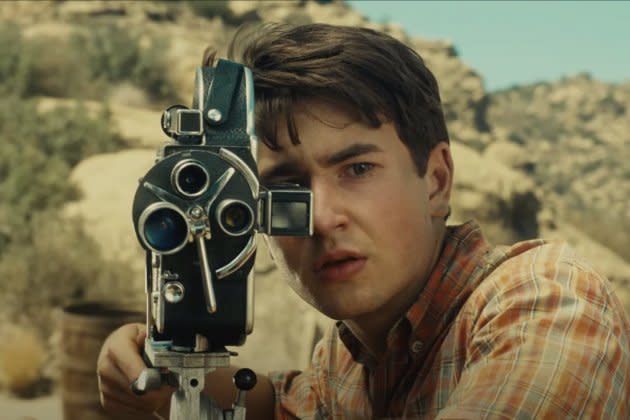How Artisans Brought Cecil B. DeMille’s Famous Train Crash to Life in ‘The Fabelmans’

According to director of photography Janusz Kaminski, Steven Spielberg’s earliest home movies still exist, and were consulted for the scene in “The Fabelmans” in which young Sammy Fabelman recreates a train crash scene from Cecil B. DeMille’s 1952 film “The Greatest Show on Earth.”
“We’ve watched them before, but they are a little too primitive for our purposes,” says Kaminski, veteran of 19 films with the director. “They’re clever, but it was harder back then for a kid. We needed something a bit more slick that would work within our overall film.”
More from Variety
Kaminski shot the majority of the film on 35mm film emulsion, as he usually does with Spielberg. Extensive testing revealed that actual 8mm wasn’t practical in part because striking a print was inconvenient. Kaminski shot the boy’s first attempt, done before he acquires a camera, in 35 mm format, with the sequence ending on a delicately lit closeup of the boy’s rapt face.
A bit later, after the boy receives a windup 8mm camera, he restages the crash and films it. He projects the resulting footage in his closet projection room, showing his mother, played by Michelle Williams, who proclaims it ”the greatest show on earth.”
These brief shots were actually accomplished by second unit director of photography Magdalena Gorka, using the 16mm film format and a Frazier lens, a specialized lens that adds apparent depth of field and allows for unusual angles. The set was built on a stage in Santa Clarita and the shots were done over two days.
“Steven knew exactly what he wanted, and gave very precise instructions,” says Gorka. “He wanted to be really close to the train, as though you’re seeing it coming at you through the boy’s eyes. The Frazier lens allowed for that proximity, along with the huge depth of field. Steven is technically very savvy, and then he improves each shot with every take. Janusz and Steven were working nearby on a another set, and would look things over and approve or give notes before and after each take.”
Gorka sometimes purposefully flared the lens with a flashlight.
“Janusz had lit the set in his very specific style, which is nearly impossible to repeat or emulate,” says Gorka. “He uses very strong, dramatic and intuitive lighting that somehow looks very natural. It’s masterful and magical.”
These images, based loosely on the shots in the DeMille movie, were then manipulated in the digital intermediate to add contrast, saturation, edge fogging and additional flares redolent of amateur 8mm cinematography.
“The trick was to make these small objects feel big, powerful and exciting, as they would appear to a young boy,” says Gorka. “It was definitely a unique assignment.”
Best of Variety
Oscars Predictions 2023: PGA and SAG Have Final Word With One Week Until Final Voting Opens
Oscars Predictions: Supporting Actress – Angela Bassett Could Lock Up Her Oscar Win, If She Wins SAG
Sign up for Variety’s Newsletter. For the latest news, follow us on Facebook, Twitter, and Instagram.

